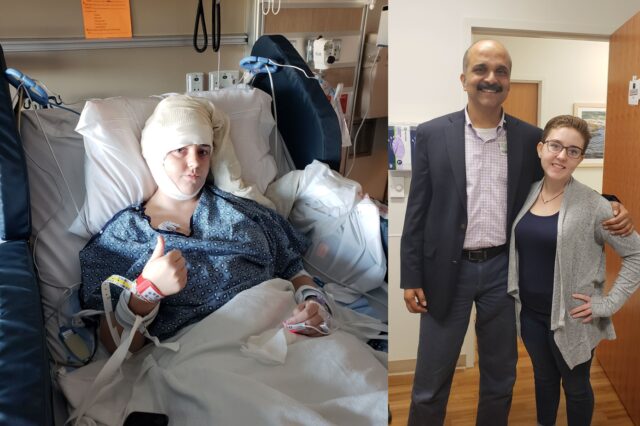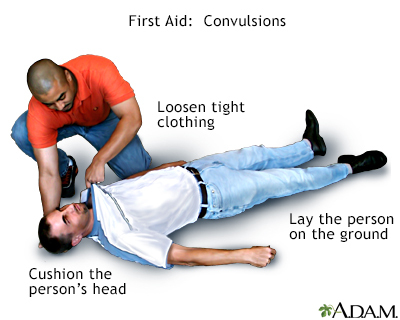Seizing the Day: Brooklynn’s Escape From Epilepsy
Robyn Nelson called louder and louder for her 4-year-old daughter, who was somehow drifting away despite lying right by her mother’s side. “Mommy, where are…

Update your location to show providers, locations, and services closest to you.
Bilateral tonic-clonic seizure is a type of seizure that involves the entire body. It is also called grand mal seizure. The terms generalized seizure, convulsion, or epilepsy are most often associated with bilateral tonic-clonic seizures.
Seizure - tonic-clonic; Seizure - grand mal; Grand mal seizure; Seizure - generalized; Epilepsy - generalized seizure
Seizures result from overactivity in the brain. Bilateral tonic-clonic seizures may occur in people of any age. They can occur once (single episode). Or, they can occur as part of a repeated, chronic illness (epilepsy). Some seizures are due to psychological problems (psychogenic or non-epileptic).
Many people with generalized bilateral tonic-clonic seizures have one or more symptoms such as:
Some people have a focal seizure (only affecting one part) that becomes a bilateral tonic clonic seizure.
The seizures often result in rigid muscles (tonic phase). This is followed by violent muscle contractions (clonic phase). Other symptoms that occur during the seizure may include:
After the seizure, the person may have:
The doctor will perform a physical exam. This will include a detailed check of the brain and nervous system.
An EEG (electroencephalogram) will be done to check the electrical activity in the brain. People with seizures often have abnormal electrical activity seen on this test. In some cases, the test shows the area in the brain where the seizures start. The brain may appear normal after a seizure or between seizures.
Blood and urine tests may also be ordered to check for other health problems that may be causing the seizures.
Head CT or MRI scan may be done to find the cause and location of the problem in the brain.
Treatment for tonic-clonic seizures includes medicines, changes in lifestyle for adults and children, such as activity and diet, and sometimes surgery. Your doctor can tell you more about these options.


Abou-Khalil BW, Gallagher MJ, Macdonald RL. Epilepsies. In: Jankovic J, Mazziotta JC, Pomeroy SL, Newman NJ, eds. Bradley and Daroff's Neurology in Clinical Practice. 8th ed. Philadelphia, PA: Elsevier; 2022:chap 100.
Leach JP, Davenport RJ. Neurology. In: Ralston SH, Penman ID, Strachan MWJ, Hobson RP, eds. Davidson's Principles and Practice of Medicine. 23rd ed. Philadelphia, PA: Elsevier; 2018:chap 25.
Thijs RD, Surges R, O'Brien TJ, Sander JW. Epilepsy in adults. Lancet. 2019;393(10172):689-701. PMID: 30686584 pubmed.ncbi.nlm.nih.gov/30686584/.
Wiebe S. The epilepsies. In: Goldman L, Schafer AI, eds. Goldman-Cecil Medicine. 26th ed. Philadelphia, PA: Elsevier; 2020:chap 375.

Robyn Nelson called louder and louder for her 4-year-old daughter, who was somehow drifting away despite lying right by her mother’s side. “Mommy, where are…
